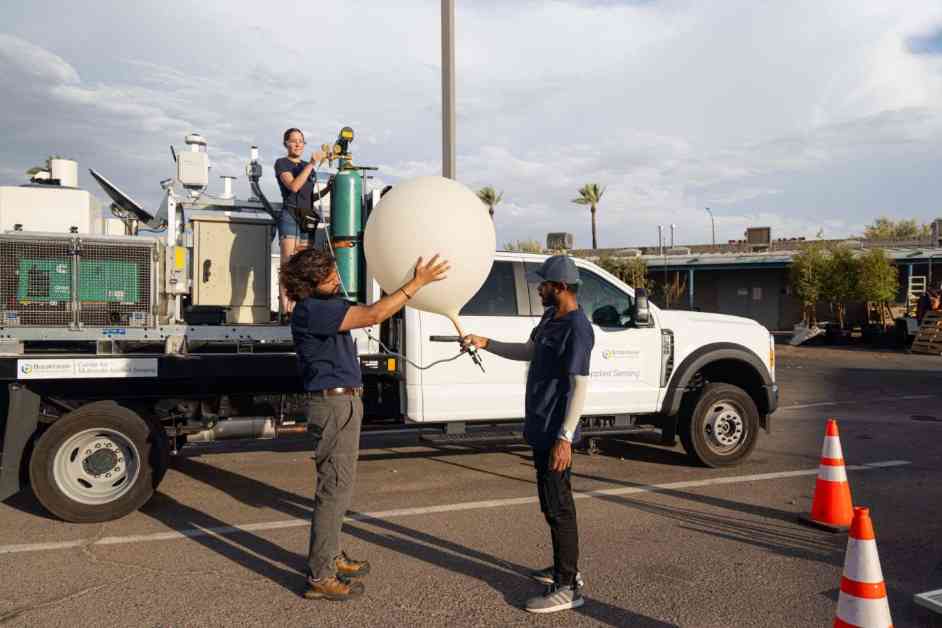Two trucks equipped with advanced weather sensors, lasers, and balloons have been traveling through the sweltering cities of Arizona for the past month, mapping the extreme heat in great detail. This initiative is part of a study to understand urban “microclimates” and their impact, especially in the face of rising temperatures due to climate change.
Led by Katia Lamer from Brookhaven National Laboratory in New York, the research team aims to provide a ground-level perspective on the heat experienced in cities. By gathering data on these microclimates, cities can develop more effective strategies to keep their residents cool and safe during heatwaves.
Arizona has been chosen as the primary location for this study due to its intense heat, making it a challenging yet crucial environment to explore. The use of weather balloons and other advanced technology allows researchers to capture detailed information about the heat distribution within urban areas.
Understanding how heat is distributed at a micro level within cities is essential for urban planners and policymakers to develop targeted solutions for heat mitigation. As temperatures continue to rise globally, the need to adapt cities to extreme heat events becomes increasingly urgent.
By utilizing mobile weather labs to map out these microclimates, researchers can provide valuable insights that can inform future urban planning decisions. This data-driven approach can help cities better prepare for and respond to heatwaves, ultimately safeguarding the health and well-being of their residents.
In addition to mapping out extreme heat impact in US cities, the study also aims to raise awareness about the importance of climate adaptation measures. By highlighting the specific challenges posed by urban heat islands, the research team hopes to spur action at the local level to address these issues effectively.
Overall, the use of innovative technology and data collection methods to study urban microclimates represents a significant step forward in understanding the complex dynamics of heat within cities. This research has the potential to inform evidence-based policies and interventions that can enhance the resilience of urban communities in the face of climate change.






